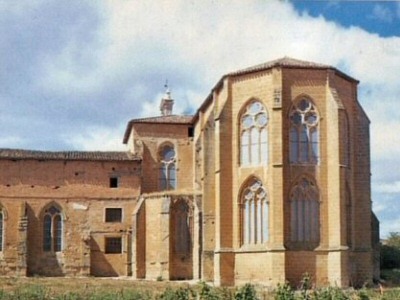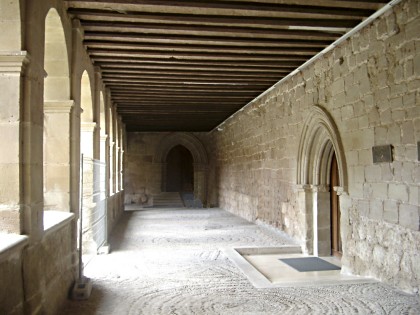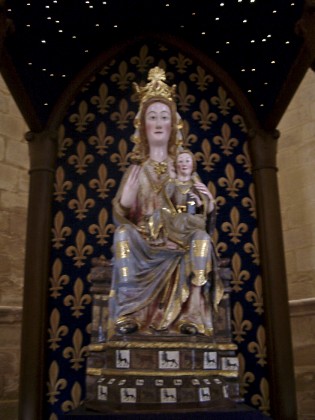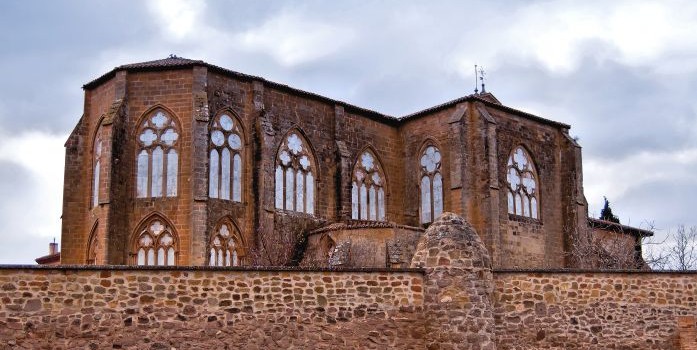For the cyclist who prefers to ride on asphalt, the Pilgrim's Way to Santiago de la Calzada leads from Azofra via Cañas to Santo Domingo de la Calzada. Just outside the town of Cañas is the
Santa María de San Salvador Monastery.
A Cistercian convent lives here.
In 1170, Count Lópe Díaz de Haro and his wife Doña Aldonza Ruiz de Castro donated the convent and brought nuns from Las Ayuelas near Santo Domingo de la Calzada, who had joined the Cistercian order. Their daughter Doña Urraca López de Haro y Ruiz de Castro became the first abbess. Her tomb is located in the chapter house of the monastery.
Many of the present monastery buildings (including the cloister) received their present appearance in the 18th century.

Picture from the brochure I received with the admission ticket. It shows the alabaster windows from outside.

The inner courtyard in the cloister

The simple cloister gives an idea of the Romanesque structures.

In the cloister, pebble mosaics have just (2004) been newly laid in the old style.

The Romanesque tomb of the first abbess in the chapter house. It rests on the back of six animals (dogs, lions, etc.). The right side of the sarcophagus shows a funeral procession of nuns and abbots, the left side shows scenes of mourning and mourning.

The altar retable is a masterpiece of Spanish Renaissance. It depicts scenes from the life of the Virgin Mary and her virtues.

Warm light streams through the alabaster windows in the choir.
This is where the huge altar stood for a long time until it was moved to the other side of the nave.

This wood-carved Mary in the church has a very long head and holds a rose in her hand, just like the "Holy Virgin of the Rose" in the grotto in Nájera. She probably originally stood somewhere high up. The baby Jesus with a book under his arm raises his index finger. Attention!

Tour of the small but fine museum.

This early Gothic statue represents Anna, Mary and Jesus.


